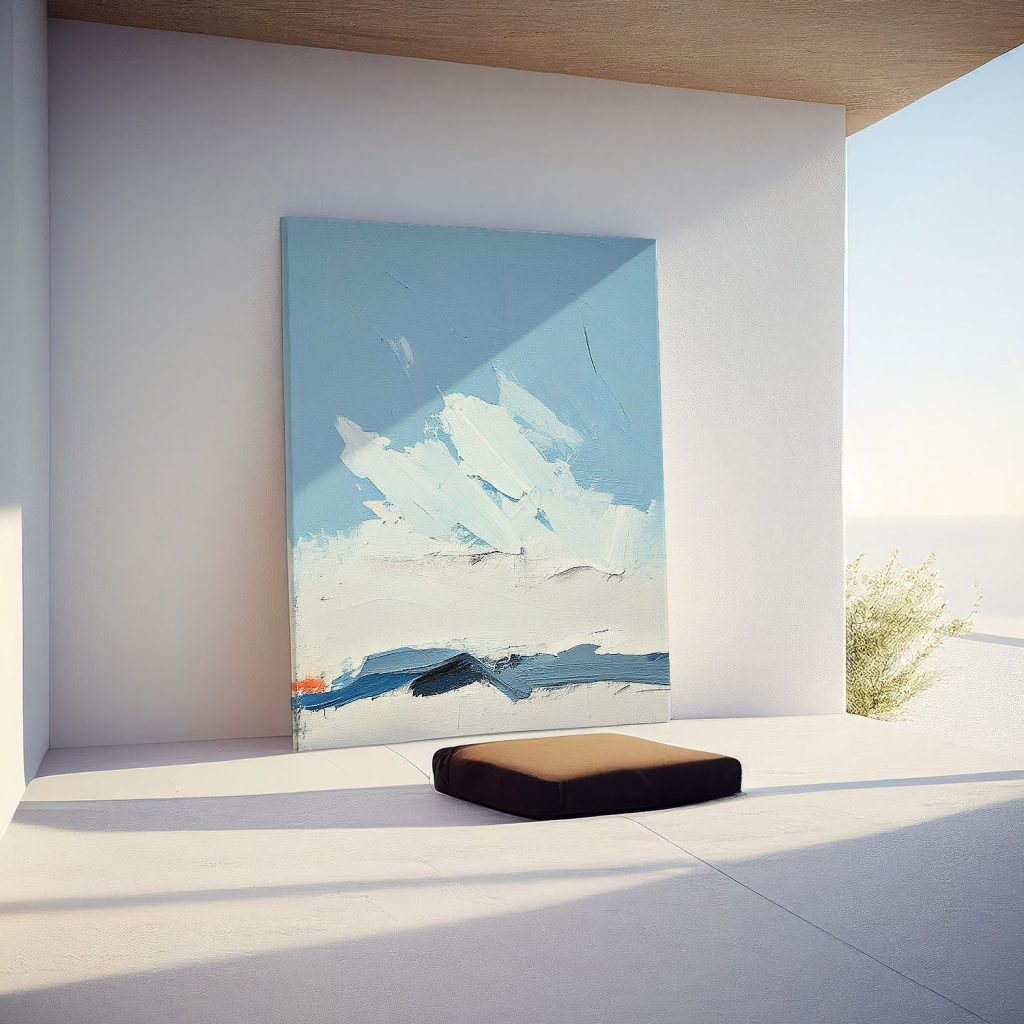The mixing and blending of oil paints is a crucial step in oil painting creation. Mastering relevant skills can help painters achieve the desired color effect. The following is an introduction from aspects such as basic understanding, blending methods, and precautions:
Basic cognition
The three elements of color: Understanding hue, lightness and purity is crucial for color matching. Hue is the appearance of a color, such as red, yellow, blue, etc. Lightness refers to the brightness of a color and can be adjusted by adding white to brighten it or black to darken it. Purity refers to the vividness of a color. Adding other colors will reduce its purity. For example, when blending the blue of the sky, if you want a bright light blue, you can add white to increase the lightness. If you want a deep blue, you can add black to reduce the lightness, but be careful not to add too much black to avoid making the color dull.
The principle of the three primary colors: Red, yellow and blue are the three primary colors. They cannot be mixed with other colors, but they can be mixed to produce various other colors. For example, red and yellow are mixed to get orange, yellow and blue are mixed to get green, and red and blue are mixed to get purple. By adjusting the proportions among the three primary colors, colors of different hues and purities can be mixed.
Blending method
Basic color mixing
Adjacent color blending: The blending of adjacent colors on the color wheel can create a harmonious and natural transition effect. For instance, when yellow and orange are mixed, a warm tone between the two can be obtained, which is suitable for depicting scenes such as sunlight and flames.
Complementary color mixing: Colors opposite each other on the color wheel are complementary colors, such as red and green, yellow and purple, blue and orange. Complementary color mixing will cancel each other out, causing the color to darken or turn gray. When blending, adding an appropriate amount of complementary colors can reduce the purity of the colors and create a calm and reserved atmosphere. For example, when blending bright red, adding a small amount of green can make the red softer and deeper.
Brightness adjustment
Adding white to brighten: White is the most commonly used color for brightening, but it is important to control the amount used. Excessive addition can make the color pale and weak. For instance, when blending pink flowers, you can first add a small amount of white to the red and gradually adjust it to the desired lightness.
Blackening and darkening: Black can reduce the lightness of a color, but it will make the color dull. Be cautious when using it. You can first mix black with a small amount of other colors and then add it to the target color to avoid the color being too harsh. For instance, when creating a dark background, you can mix black with blue and then add it to the background color to make it more profound.
Purity adjustment
Adding grey: Grey can reduce the purity of the color, making it softer and more reserved. You can directly use the ready-made grey pigment, or mix black and white to create different shades of grey and then add them to the target color. For instance, when creating a retro-style picture, an appropriate amount of gray can be added to the colors to create an old and weathered feeling.
Adding complementary colors: As mentioned earlier, the mixing of complementary colors can also reduce the purity of the color. By adjusting the proportion of complementary colors, the purity change of colors can be precisely controlled.
Blending techniques
When mixing colors, follow the principle of “small amounts and multiple times”. First, add a small amount of pigment, stir well and observe the color effect. Then, gradually add it as needed to avoid adding too much pigment at one time and making it impossible to adjust the color. For example, when blending a specific type of green, a small amount of yellow and blue can be added first. After stirring evenly, if the color is not bright enough, a small amount of yellow can be added. If you think the color is too dark, you can add a small amount of white.
Record the mixing ratio: For frequently used colors, you can record the mixing ratio so that you can quickly and accurately mix the same color next time you use it. This helps maintain the consistency of the colors in the works, especially when creating a series of works.
Make good use of the space in the color palette: Make rational use of the space in the color palette and place different colors separately to avoid mutual contamination of colors. At the same time, based on the frequency of color usage and the matching relationship, you can place the frequently used colors close to yourself for easy access.
Precautions
Paint quality: Choose high-quality oil paints. Poor-quality paints may cause problems such as fading and discoloration, which can affect the preservation and viewing effect of the work.
Color-matching sequence: Generally speaking, first mix the main color tone, and then adjust the lightness and purity as needed. For instance, when adjusting a character’s skin tone, one can first create the basic main color tone of the skin tone, and then, based on the character’s light and shadow changes and emotional expression, add an appropriate amount of white, black or other colors for adjustment.
Cleaning tools: When mixing different colors, it is necessary to clean the brush and palette knife in time to avoid color mixing and the formation of dirty colors. Turpentine or professional pen cleaner can be used to clean the tools.
